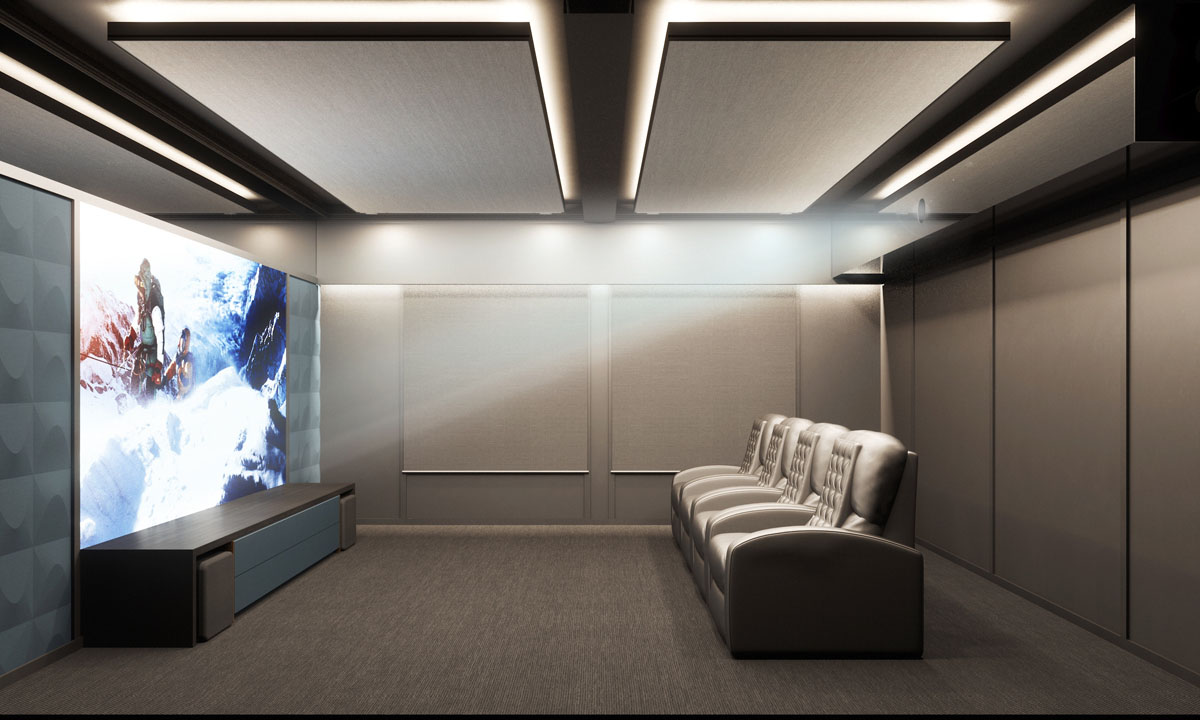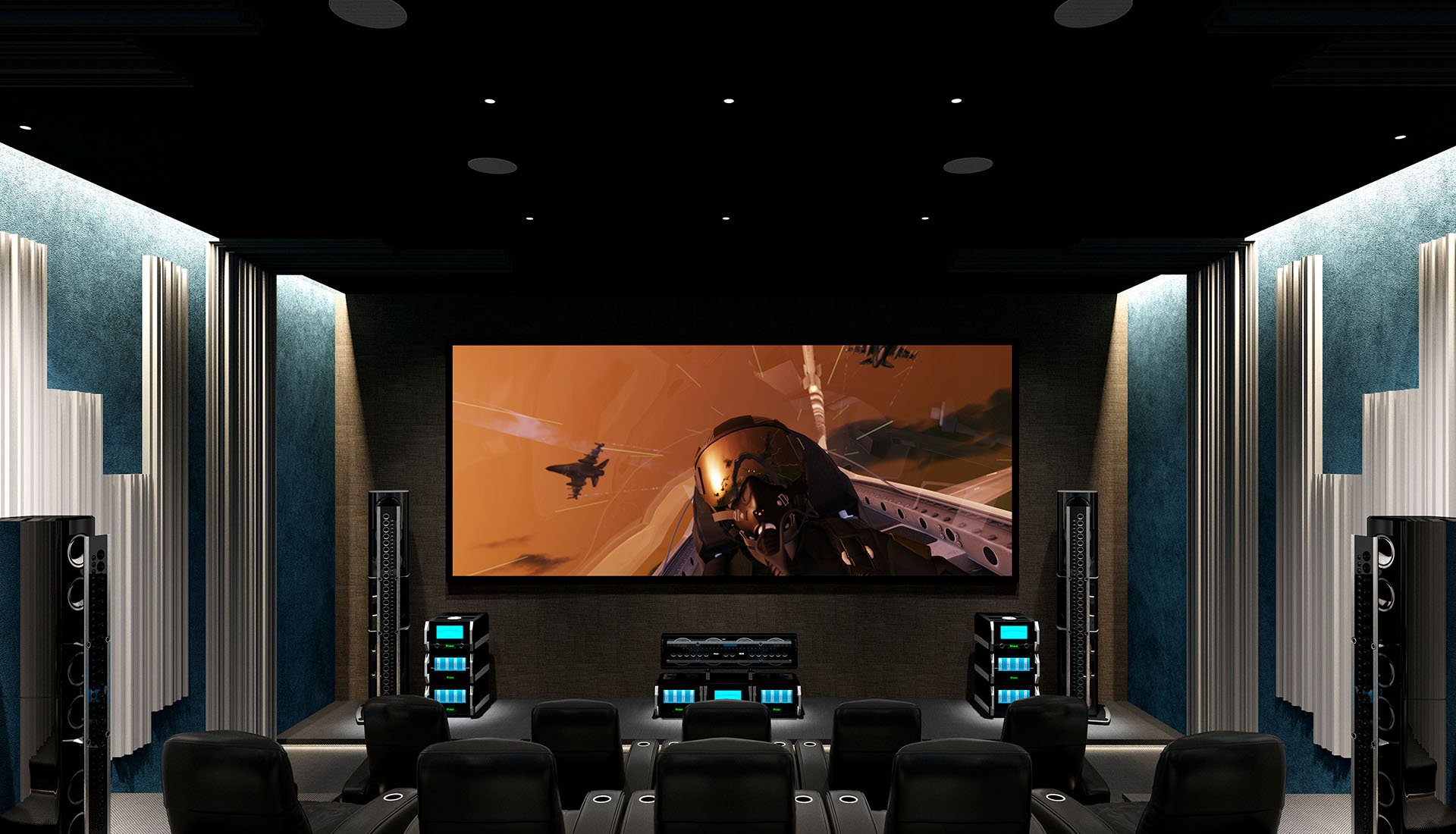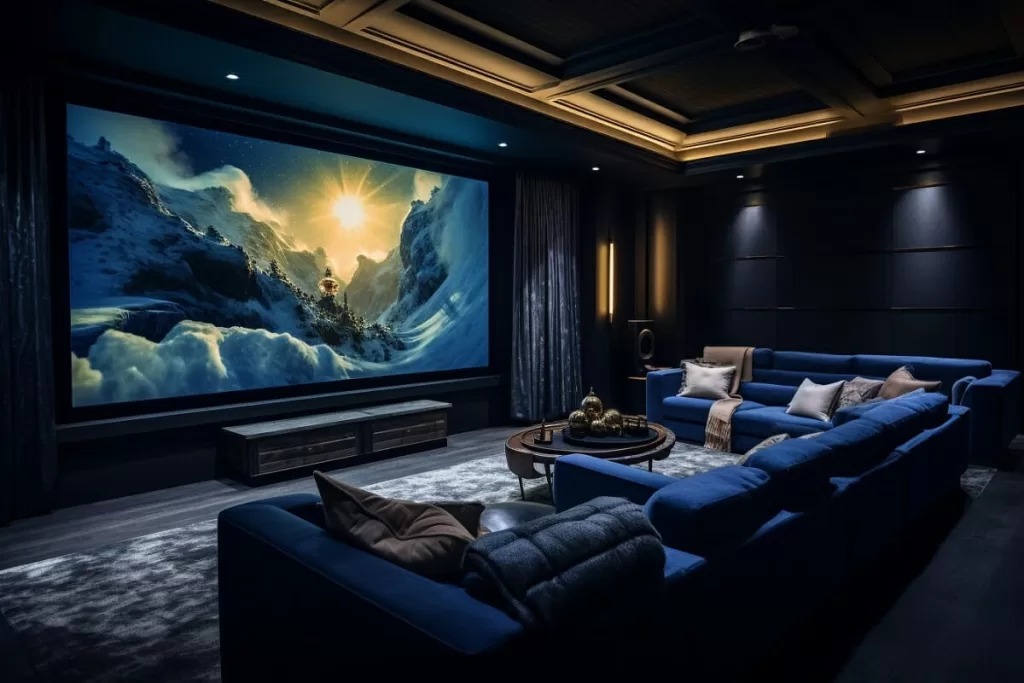Innovative Home Theater Tampa Concepts for the Contemporary Home
Innovative Home Theater Tampa Concepts for the Contemporary Home
Blog Article
Home Theater 101: Everything You Need to Know for a Motion Picture Experience in the house
Producing a home theater that matches the cinematic experience of an industrial theatre includes mindful consideration of multiple parts, including display choice, stereo, and room format. Each component plays a critical role in attaining the preferred atmosphere and capability. Whether you are pondering the optimal display size or the intricacies of surround sound, comprehending these basics is necessary. As we discover these critical elements, it becomes obvious that the choices made can substantially influence your total viewing experience, leaving one to consider how these decisions will shape your personal movie theater.
Choosing the Right Screen
When setting up a home cinema, selecting the appropriate display can make or break the watching experience - home theater design tampa. The display functions as the focal point of your setup, influencing photo high quality, watching angles, and total aesthetic. Trick variables to take into consideration include display resolution, kind, and dimension
First, figure out the proper screen dimension based on your room dimensions and seating range. A basic guideline is to sit about 1.5 to 2.5 times the angled screen size for optimum viewing. Next, pick in between various display types, such as fixed-frame, motorized, or retractable screens, each offering distinct benefits. Fixed-frame screens commonly give the very best photo top quality, while motorized options permit versatility precede use.
Resolution is another important factor. For an absolutely immersive experience, consider a screen made for 4K or perhaps 8K web content, guaranteeing intensity and clarity. In addition, consider the display's gain, which influences brightness and contrast; a higher gain can enhance brightness in well-lit rooms, while a reduced gain may be more ideal for darker settings.
Selecting Audio Equipment
Audio devices is a vital part of any home cinema system, substantially enhancing the overall watching experience. The selection of audio equipment can establish the deepness, clarity, and immersion of noise, important for creating a cinematic ambience.
When choosing audio equipment, consider a surround audio system, which typically includes a receiver, numerous speakers, and a speaker. A 5.1 or 7.1 network system is suggested, where the first number represents the audio speakers and the second the speaker, providing an immersive soundscape. The receiver is the heart of the system, managing sound and video signals, and should sustain modern formats like Dolby Atmos for an enhanced spatial experience.
Quality speakers are necessary; seek versions that provide a balanced sound profile with good bass response. Floor-standing speakers can create richer sound, while shelf choices save room. Furthermore, take into consideration wireless options for convenience of installation, although wired systems frequently deliver exceptional efficiency.

Ideal Seating Plans
Creating an excellent home cinema experience hinges considerably on optimum seating arrangements. The setup of seats plays a critical role in both comfort and seeing high quality, directly influencing the overall motion picture experience.
First, take into consideration the screen size and watching range. An usual guideline is to place seats at a range about 1.5 to 2.5 times the diagonal dimension of the screen. This makes certain an immersive experience without straining the eyes.
Next, altitude is important. If your seats is in a tiered format, the back rows ought to be greater than the front to avoid obstructions. For level seating, make sure that the front row is not too near the screen, and that everybody has a clear line of sight.
Furthermore, consider the setup in regards to social dynamics. Group seats can improve the common experience, while specific seats might be preferred for individual viewing.

Lastly, prioritize convenience with ergonomic seats that supports prolonged watching durations. Integrating recliner chairs or supported seats can significantly boost the site experience, making the home cinema a recommended location for both home entertainment and relaxation.
Lighting and Atmosphere
Efficient lighting and ambiance are essential parts of a properly designed home theater, as they substantially influence the checking out experience. The right illumination can boost the motion picture feeling, while bad options can take away from it. For optimal outcomes, think about a layered illumination method that includes ambient, task, and accent lights.
Ambient lights offers basic illumination, making certain that the space is not totally dark, which can stress the eyes. Dimmer switches are highly suggested, permitting for adjustments based upon the web content being watched. Job lights, such as wall sconces or flooring lamps, provides practical lighting for activities like reading or browsing the room without disrupting the overall ambience.
Accent lighting can be made use of to highlight building features or develop centerpieces, including depth and rate of interest to the space. LED strip lights behind screens or along shelves can provide a subtle glow that improves the aesthetic experience without frustrating the customer.

Wiring and Installation Tips
A tactical wiring arrangement is important for accomplishing optimum performance in your home theater system. Correct circuitry not only guarantees premium audio and video clip signals but additionally improves the total aesthetic of your area. Begin by drawing up your layout, recognizing where each part will be put, including your display, speakers, and more receiver.
When picking cable televisions, prioritize premium, suitably gauged circuitry to reduce signal loss. HDMI cords need to be used for video connections, while speaker cable should match the specifications of your speakers and amplifier. Opt for in-wall rated cables to follow safety standards and keep a clean appearance.

Verdict
In recap, creating a phenomenal home movie theater experience calls for careful factor to consider of various components, consisting of display selection, audio equipment, seating setups, lights, and circuitry. Each Learn More part plays a crucial duty in attaining ideal efficiency and atmosphere, inevitably improving the pleasure of home entertainment. By prioritizing these aspects, a cinematic ambience can be efficiently reproduced, permitting immersive seeing experiences that rival standard movie theater setups. Attention to information in each location is necessary for overall contentment.
Producing a home theater that rivals the motion picture experience of an industrial theater involves cautious consideration of multiple parts, consisting of screen selection, sound systems, and room design.When setting up a home theater, selecting the best display can make or damage the watching experience. Next, select in between numerous screen kinds, such as fixed-frame, motorized, or retractable displays, each offering distinct benefits. For an absolutely immersive experience, take into consideration a screen created for 4K or also 8K content, making sure intensity and clearness.In recap, producing an outstanding home cinema experience calls for cautious consideration of various aspects, consisting of display option, audio equipment, seating setups, illumination, and wiring.
Report this page